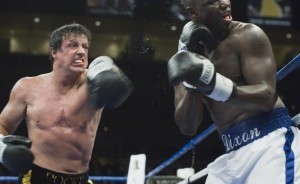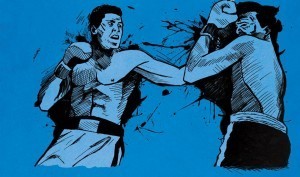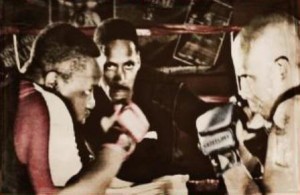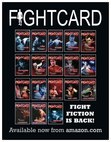Jack Tunney's Blog, page 30
November 27, 2013
FIGHT CARD UPDATE
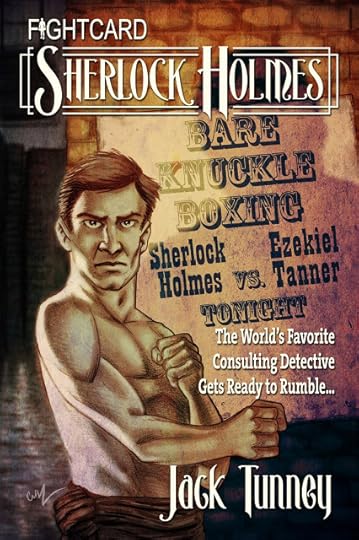
FIGHT CARD UPDATE
Greetings and the best of the holiday season to each of you. As we round out 2013 with our 27th Fight Card title, we look forward with anticipation to more terrific tales from all our imprints in 2014…The line-up looks terrific…
Well, I’m certainly thankful for Sherlock Holmes and all the joy he’s given me over the years … To celebrate the holiday season, Fight Card’s December release – Fight Card Sherlock Holmeshits the virtual spinner racks a few days early … $2.99 for your Kindle … Filled with two-fisted deduction … Noted Sherlockian author Andrew Salmon writing as Jack Tunney…
FIGHT CARD SHERLOCK HOLMES
London, England, 1884 … What happened when Sherlock Holmes stepped into the exhibition ring against retiring prize fighter McMurdo four years before The Sign of Four? What incident was Holmes recalling between Mr. Mathews and himself in the waiting room at Charing-Cross in The Adventure of the Empty House? Sherlockians have wanted to know for decades. The answers can be found in Fight Card Sherlock Holmes: Work Capitol…
Victorian Slang for a crime punishable by death, Work Capitol finds the world’s most–chasing a diabolical murderer through the dark, illicit, world of Victorian bare-knuckle boxing. To solve the case, Holmes must take a desperate chance,Ezekiel Tanner…
Sometimes the simplest crimes hide the darkest secrets…And this time, Holmes and Watson know brawn will count as much as brains…
As always, any mentions on your blogs or via your social networking sites are needed and appreciated.
The new year will be kicking off with Fight Card MMA: Rosie The Ripper from Sam Hawken, followed by Fight Card Luchadores: Rise Of The Luchador from Jason Ridle, Fight Card: Guns Of November (our Kennedy conspiracy tale) from Joseph Grant, Fight Card: Monster Man from Jason Chirevas, Fight Card MMA: A-Town
Throwdown from Balogun Ojetade, Fight Card Romance: Love On The Ropes from Kathleen Rice Adams, Fight Card: Fight River from Tommy Hancock, Fight Card: The Copper Kid from Brian Drake, and the first of our Fight Card charity anthologies, Iron Head And Other Stories, benefiting literacy and author-in-need charities…
Thanks to everyone who has worked so hard to make Fight Card a success. I appreciate each of you. May you and yours enjoy the season and keep punching…
AVAILABLE NOW: FIGHT CARD SHERLOCK HOLMES!

AVAILABLE NOW: FIGHT CARD SHERLOCK HOLMES!
FIGHT CARD’S HOLIDAY EXTRAVAGANZA … THE WORLD’S MOST FAMOUS DETECTIVE IS READY TO RUMBLE …
FIGHT CARD SHERLOCK HOLMES: WORK CAPITOL
London, England, 1884 … What happened when Sherlock Holmes stepped into the exhibition ring against retiring prize fighter McMurdo four years before The Sign of Four? What incident was Holmes recalling between Mr. Mathews and himself in the waiting room at Charing-Cross in The Adventure of the Empty House? Sherlockians have wanted to know for decades. The answers can be found in Fight Card Sherlock Holmes: Work Capitol…
Victorian Slang for a crime punishable by death, Workaccompanied by thechasing a diabolical murderer through the dark,
illicit, world of Victorian bare-knuckle boxing. To solve the case, Holmes musts mostEzekiel Tanner…
Sometimes the simplest crimes hide the darkest secrets … And this time, Holmes and Watson know brawn will count as much as brains…
HOLMES AND FISTICUFFS
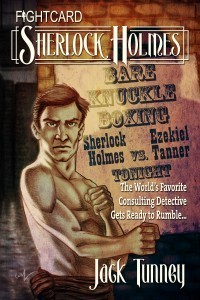
HOLMES AND FISTICUFFS
IN ANTICIPATION OF THE PUBLICATION OF FIGHT CARD SHERLOCK HOLMES: WORK CAPITOL, AUTHOR ANDREW SALMON GIVES US A LOOK AT HOLMES’ PUGILISTIC SIDE …
A STRAIGHT LEFT AGAINST A SLOGGING RUFFIAN
Sherlock Holmes and the Science of Defense
by
Andrew Salmon
When the trailer for the first Robert Downey Jr. Sherlock Holmes film was released, it took less than a nanosecond for the Holmesian world to tremble. The film portrayed everyone’s favorite consulting detective as a kick-ass action star, which did not sit well with Holmes traditionalists.
To this day, I’m not quite sure why.
In the original tales, Doyle describes Holmes as an expert in Baritsu, making him a mixed martial artist. He is also described as a crack shot, good with a sword and singlestick fighting. And, yes, Holmes is not just proficient at boxing, but good enough to turn pro according to a former boxer he goes toe to toe with in one of the canonical tales.
For the sake of this piece, we’ll concentrate on boxing. In The Sign of Four, Holmes reminds the former boxer, McMurdo, that he had fought an exhibition bout with him at Alison’s rooms four years previously – a scene I use to kick off my Fight Card Sherlock Holmes tale – and McMurdo’s comment that Holmes could have turned pro if he so desired is not faint praise coming from a former professional fighter well aware of the dangers of the ring.
Later in the canon, Holmes gets involved in a bar fight in The Adventure of the Solitary Cyclist and uses his boxing skills against a slogging ruffian to come out on top. He alludes to having a tooth punched out in the waiting room of Charing-Cross in The Adventure of the Empty House without further explaining the event, which left me free to do so in my tale.
So where did he acquire his boxing skills? They can’t be mastered from a book, can they? The only answer is Holmes mastered them in the ring. His bout with McMurdo simply could not have been his first and last. It’s clear Holmes had taken the time to learn how to hit and get hit, developing his skills by applying what he learned.
So what’s the problem? Holmes is a tough customer. It’s as simple as that. Given his chosen profession, he would have to be able to defend himself, right? My opinion is the naysayers were used to reading Doyle’s descriptions of Holmes merely possessing these abilities whereas the new films showed Holmes demonstrating these abilities.
Holmes as an action star? You betcha! It’s how Doyle conceived and portrayed him and holds true for the current incarnations. We got to see Jeremy Brett demonstrate Holmes’s boxing skills back in the day and though Benedict Cumberbatch has yet to throw ‘em, the Downey films are full of Holmes fights, and even the folks behind Elementary have given us Jonny Lee Miller showing us Holmes working off his frustrations on the heavy bag in a recent episode.
Holmes is the thinking man’s action star. He can still outthink, out deduce and outwit all comers, but he can also put you on your ass if you want to start trouble.
What some view as an added dimension to the character shoe-horned in for a modern audience has been there all along and showing it in the current adaptations helps to round out the character. Of course, it’s vital the physical stuff not take over the whole show. Holmes is the smartest guy in fiction and brain must always triumph over brawn.
Given the countless adaptations of Holmes in every medium imaginable over the decades, seeing Holmes in a new light refreshes the character. The success of shows like Sherlock and Elementary and the Downey films are bringing new fans into the Holmesian world where they will, hopefully, seek out the original tales and the ones that have followed.
Holmes is king! And I wouldn’t try to knock off his crown. Not if you know what’s good for you.
November 22, 2013
JASON CHIREVAS CLIMBS IN THE RING
JASON CHIREVAS CLIMBS IN THE RING
A newspaper editor and columnist, Jason Chirevas’ dark, nasty, crime fiction has appeared in Hardboiled and A Twist of Noir. He’s also got a rather epic weird western serial waiting for you at Pulp and Dagger. He wrote a short film, which won some awards in about 1994, but that’s probably too long ago to cling to in a bio now, right? We’ll just move on.
Jason issues short, often irritated missives on Twitter @JasonChirevas and sometimes discusses noir, westerns and pulp heroics at www.sixshotjetpack.com
Jason lives in Bronxville, New York, with the toy geek ideal of what a wife should be.
Monster Man (coming in 2014) is his first round in the Fight Card ring.
November 21, 2013
JEREMY L. C. JONES JOINS THE FIGHT CARD TEAM
JEREMY L. C. JONES JOINS THE FIGHT CARD TEAM
In 2014, Fight Card will be publishing a series of short story anthologies with boxing and MMA tales from a wide variety of authors. These collections will be produced under the newly established Fight Card Presents imprint, which will be co-edited by Jeremy L. C. Jones and Paul Bishop. All royalties from the Fight Card Presents anthologies will go directly to literary or author-in-need charities …
Freelance writer, editor, and teacher, Jeremy L. C. Jones lives in South Carolina. He gets up early, writes about music and books for newspapers, magazines, and webpages, then drives over to the college to teach a literature class to non-majors, and comes home and writes some more. It also means he talks to his dogs much more than he talks to people.
Jones grew up in South Florida in the ’70s and ’80s. This means is his childhood was a cross between Miami Vice, Conan the Barbarian, and Apocalypse Now, with a whole lot of going to see Star Wars, playing soccer, and hunting cocounts with spears made out of steak knives taped to broom handles. Yes, that’s exactly what it was like, only a lot preppier and a lot crazier.
He’s had a lot of jobs he wasn’t very good at. He’s worked retail, maintenance, and construction. He’s laid sod and tennis court clay. He’s been a dish washer, food runner, appetizer chef, and cook. He’s been a courier for a law firm and an editor for a newspaper. The last one, he did a pretty good job at for a 20 year old Floridian living in an Alaskan fishing village. Mostly, he’s a teacher, like his father, grandfather, and great-grandfather before him.
Jones got hooked on boxing by watching Ali with his dad as a kid (and stopped when Tyson bit that guy’s ear) and by reading Ernest Hemingway, Jack London, Erskine Caldwell, and Harry Crews in college.
After years away, Jones has returned to his first love: making stuff up. This December will see the debut of Outlaw Unchained, a monthly series of short stories, novelletes, and novellas (High Noon Press) written by Jones and based on a character created by Frank Roderus. Also debuting in December is the Western Fictioneers Storytellers collections of essays about writing westerns co-edited with Troy D. Smith and the first of the Fight Card anthologies. Jones’ first Fight Card novella and the anthology Old Hounds & Young Pups (Piccadilly) co-edited with Jory Sherman are due out in early 2014.
November 20, 2013
RANKING ROCKY
RANKING ROCKY
MATT SINGER HAS WRITTEN AN EXTENSIVE REVIEW POST REVIEWING AND RANKING THE ROCKY FILMS …
… Fueled by frequent cable television marathons, the Rocky series has to be one of the most widely watched franchises in cinema history. Everyone has seen it, and everyone has an opinion on it, and there’s very little agreement about anything (except maybe which movie is the worst). My Stallone piece was already in the neighborhood of 6500 words without it, so I decided to devote a separate piece here in the Newsreel to my definitive franchise rankings. I’m sure you will disagree; your counter-punches are welcome in the comments section below. Like every character says in Rocky V 500 times: Go for it …
TO READ THE FULL ARTICLE CLICK HERE
MUHAMMAD ALI AT ZEN PENCILS
MUHAMMAD ALI AT ZEN PENCILS
THE ZEN PENCILS BLOG HAS A FACINATING THREE PART ART/PROSE POST ON MUHAMMAD ALI …
ART BY GAVIN AUNG THAN
PART ONE
PART TWO
PART THREE
November 19, 2013
FIGHT CARD SHERLOCK HOLMES: VICTORIAN BARE KNUCKLE BOXING
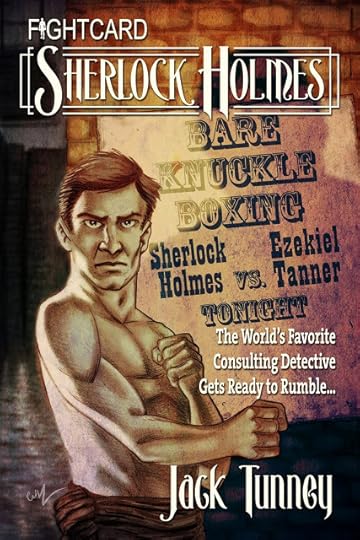
FIGHT CARD SHERLOCK HOLMES!
IN ANTICIPATION OF FIGHT CARD’S DECEMBER RELEASE, FIGHT CARD SHERLOCK HOLMES: WORK CAPITOL, AUTHOR ANDREW SALMON PROVIDES US WITH A VICTORIAN BARE KNUCKLE BOXING PRIMER …
Boxing has evolved and changed since ancient times and boxing in Victorian times was a different animal than boxing today. In the early 1800s, bare knuckle boxing was king. Earning lavish purses, toasted wherever they went, hired as boxing instructors or bodyguards for the rich aristocracy, who also funded their bouts, bare knuckle fighters (or rawsmen) were the rock stars of the day.
Fighters lived fast and hard, spent their fortunes without a thought, usually dying young from drink, the long-term effects of their sport, or from diseases that were beyond medicine at that time. This up and down lifestyle made it common for fighters to know the inside of a debtor’s prison or seek work as porters, blacksmiths, and on the docks between fights. Some survived the sport such as John Gully who was elected to Parliament. Most died poor and destitute.
The fights themselves were raw, brutal affairs until The Pugilistic Club was formed in 1834 as a governing body to regulate fights, make sure fighters were paid, and retained an official ring-maker. This lead to the Prize Ring Rules of 1838 which created some guidelines for bouts, eliminating head butts, hitting or kicking a man when down, and outlawing spiked boots or cleats.
Stripped to bare chest and britches, a fighter would step into the ring, tie his colors to a corner post, proceed to the middle of the ring. There, a scratch line would drawn in the sawdust, sand, or earth (if the fight was outdoors). The fighters would toe the line and begin fighting until one or both fighters were knocked down. At which point, the scratch (or round) was over, and both fighters had to return to their corner. Rounds lasted until a knockdown, so a single scratch could last from mere seconds to forty-five minutes or longer, depending on the skill of the combatants.
No stools were provided in the corners, in fact using one was considered a foul. Rather one of the fighter’s seconds would go down on one knee, creating a bench for the fighter to sit on to take water from a damp sponge. From the moment a fighter retreated to his corner, he had thirty seconds to return to the scratch line int (ort), the fight was declared over and the fighter still standing was the winner. Wrestling throws and grips were also permitted and an integral part of the fight, which were usually refereed by two umpires.
These fights eventually gave way to the Queensberry Rules of 1867, which instituted three-minute rounds, with a minute’s rest in-between, established the standardized ring, and also abolished the thirty-seconds to scratch rule. A downed fighter was counted out backward, from 10 to 1, not like today where the lone referee counts up from 1 to 10.
The terminology of the ring was also different than it is today. To retreat after sparring was called breaking ground. If a fighter maneuvered to the right or left to gain a strategic advantage, it was referred to as taking ground. Colorful terms were also used to describe various parts of the body. The torso itself was the mark. The nose was often referred to as the smeller, whistler, beak, snorer, sneezer, or proboscis. The mouth was called the oration trap, the tato-trap and, of course, the kisser.
Blood was a welcome sight at fights and a host of terms were used to describe it as a fighter drew the claret, opened a fresh tap, drew the home-brewed, drew the cork, drew the juice, or drew the crimson, to name a few.
When a fighter retired from boxing, a benefit was usually held by the Fancy (the brethren of the boxing ring), a celebration to raise money for the fighter to put towards life outside the ring. Since heavy drinking was something the majority of rawsmen had in common, most bought pubs and ran them until they died or lost them through bad business management. Some did prosper, living well into old age though such cases were the exception, not the rule.
Queen Victoria’s reign spelled the beginning of the end of organized bare knuckle boxing. As the 1800s progressed, the perception of boxing as a worthwhile sport waned. People moved on to other pursuits until, gradually, boxing lost its mass public appeal, royal patronage and the support of influential figures in society.
This time period also saw the rise of gloved boxing as an alternative to the bloody contests of the past. Gloves protected a fighter’s hands, allowing him to throw more punches, whereas rawsmen had to be more judicial in their attacks for fear of damaging their hands. As a result, gloved boxing was seen as more exciting.
However, bare knuckle boxing did not disappear. It continued in the shadows, becoming more and more corrupt and dangerous along the way. Relegated to seedy clubs or attics, gypsy camps, the Navy, and canal workers, the fights continued. The bouts were no-holds barred, primal affairs controlled by the criminal element as the 1900s loomed. For fans, it became a sport one did not talk about in unfamiliar company, a guilty, gritty pleasure practiced amongst a tight-knit fraternity throughout the decades since the glory days. And so it remains to this day.
FIGHT FICTION WITH FUNK!
FIGHT FICTION WITH FUNK!
ON HIS BLOG THE CHRONICLES OF HARRIET, UPCOMING FIGHT CARD MMA AUTHOR BALOGUN OJETADE (A-TOWN THROWDOWN MARCH 2014) SHARES HIS THOUGHTS ON CREATING REALISTIC FIGHT SCENES …
Writing fight scenes has always been something I enjoy and that I believe I do fairly well. This is probably due to the fact that I have been a student of indigenous African martial arts for over forty years and I have been n instructor of those same martial arts for nearly thirty years. I am also a lifelong fan of martial arts,
boxing and action films.
Thus, I share with you what little I know about writing fight scenes in the following Fight Scene Plan, which I hope will help guide you toward the light at the end of that dark, dank tunnel called wackness.
Just remember – all good plans are malleable. As my good friend, author Milton Davis, says, “A plan is a work in progress. It must be adjusted and modified based on results. An inflexible plan will eventually lead to failure.”
FOR THE FULL ARTICLE CLICK HERE



